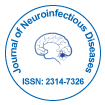Sporadic Inclusion Body Myositis
Received: 30-Oct-2020 / Accepted Date: 13-Nov-2020 / Published Date: 20-Nov-2020
Abstract
Sporadic Inclusion Body myositis (s-IBM) represents a form of chronic polymyositis unresponsive to towards the corticosteroids, affecting patients over of 50 members. In contrast the hereditary Inclusion-Body Myopathy (h-IBM) strikes younger patients. Clinical hallmark of both forms are distal muscle involvement whereas the salient histopathological features were characterized by inflammatory exudates (only in s-IBM), rimmed vacuoles, eosinophilic cytoplasmic inclusions, 16 to 18 nm tubule filamentous inclusions in both cytoplasm and as well as in nucleus.
- Sporadic Inclusion Body myositis (s-IBM) represents a form of chronic polymyositis unresponsive to towards the corticosteroids, affecting patients over of 50 members. In contrast the hereditary Inclusion-Body Myopathy (h-IBM) strikes younger patients. Clinical hallmark of both forms are distal muscle involvement whereas the salient histopathological features were characterized by inflammatory exudates (only in s-IBM), rimmed vacuoles, eosinophilic cytoplasmic inclusions, 16 to 18 nm tubule filamentous inclusions in both cytoplasm and as well as in nucleus. Small amyloid deposits near or within the vacuoles and within the nucleus as well as the nuclear membrane abnormalities and nuclear breakdown and other findings such as angulated and round fibres, necroticregenerativefibres and even ragged red fibres. None of these hallmarks were specific of IBM and can also be found in a great number of muscle and even the nerve pathologies such as Oculopharyngeal muscular Distrophy (OPMD), Desminopathies, Glycogenosis, Ceroidlipofuscinosis, ALS, Post-polio syndrome, Paraneoplastic neuropathies, and many others that we will be illustrated and discussed in the presentation. Neurophysiological findings of s-IBM and h-IBM are not specific and include mixed myogenic and neurogenic features. In conclusion the s-IBM and h-IBM both are an interesting group of muscle pathology with a complicated differential diagnostic process. It also represents a challenge to both Clinicians and Researchers involved in the neuromuscular disorders field. Inflammatory myopathies represent the main group of acquired myopathies in the clinical practice with a wellestablished clinical, laboratorial, imaging and also therapeutical aspects related to the idiopathic and paraneoplasticpolymyositis and dermatomyositis. Despite of it’s the designation and classification as an inflammatory myopathy by most of authors in the past. The Inclusion body myopathy or myositis has been progressively recognized as a chronic degenerative muscle disease. The frequent changes regarding the pathophysiological processes were the absence of the clinical response to a definite specific therapeutic approach and the recognition of new sporadic and hereditary clinical presentations are disclosing several heterogeneous facets about IBM complexity. Sporadic IBM (sIBM) represents the main acquired myopathy in patients over the age of about 50 years. Being frequently underdiagnosed, especially in the early stages of clinical compromise in which there is a clear predominance of selective weakness in long flexors of the fingers and forearms and quadriceps femoris before progression to scapular girdle, lower limb distal groups and bulbar regions. There are well-established clinic pathological diagnostic criteria described by the European Neuromuscular Centre which are currently used to diagnose sIBM with clinical and research purposes. Inflammatory myopathies represent the main group of acquired myopathies in the clinical practice with a well-established clinical, laboratorial, imaging and also therapeutical aspects related to the idiopathic and paraneoplasticpolymyositis and dermatomyositis. Despite of it’s the designation and classification as an inflammatory myopathy by most of authors in the past. The absence of the clinical response to a definite specific therapeutic approach and the recognition of new sporadic and hereditary clinical presentations are disclosing several heterogeneous facets about IBM complexity. Being frequently under diagnosed, especially in the early stages of clinical compromise in which there is a clear predominance of This work is partly presented at 30th International Conference on Neurology & Cognitive Neuroscience, February 24-25, 2020 at London, UK Vol.11 No.5 Extended Abstract Journal of Neuroinfectious Diseases 2020 selective weakness in long flexors of the fingers and forearms and quadriceps femoris before progression to scapular girdle, lower limb distal groups and bulbar regions. There are well-established clinic pathological diagnostic criteria described by the European Neuromuscular Centre which are currently used to diagnose sIBM with clinical and research purposes
Citation: Joy KMNI (2020) Sporadic Inclusion Body Myositis. J Neuroinfect Dis 11: 308.
Copyright: © 2020 Joy KMNI. This is an open-access article distributed under the terms of the Creative Commons Attribution License, which permits unrestricted use, distribution, and reproduction in any medium, provided the original author and source are credited.
Select your language of interest to view the total content in your interested language
Share This Article
Recommended Journals
Open Access Journals
Article Usage
- Total views: 2333
- [From(publication date): 0-2020 - Nov 07, 2025]
- Breakdown by view type
- HTML page views: 1495
- PDF downloads: 838
